"The past actually happened, but history is only what someone wrote down." - A. Whitney Brown
Monday, April 25, 2016
Anzac Day
Today marks the one hundredth anniversary of Anzac day, which was established on the first anniversary of the landing of the Anzac troops in Gallipoli during the First World War (though unofficial commemorations had begun almost immediately after Gallipoli).
Here's the Stuff You Missed in History Class episode about Gallipoli. And if you're interested, on AcornTV they have the Anzac Girls miniseries.
Monday, April 18, 2016
Monday, April 11, 2016
Mulready Stationery
I’m back
with a real post this week! Yay!
Last night
I finished reading The Brontë Cabinet by Deborah Lutz, which I highly
recommend. It’s a joint biography of the
Brontës through nine items. One of the
items was a letter Charlotte had written which had been torn apart and sewn
back together. The chapter about letters
discussed them more broadly; the torn one was just a small part of the
chapter. In talking about letters, Lutz
went briefly into the history of the postal system and different types of items
that were used by the Brontës. One of
the items mentioned was Mulready stationery.
This is
probably going to be a shorter post since Mulreadys didn’t last long, so a bit
of background on what was going on with postage at the time. Before 1840 (when postal reforms went into
effect), in England, postage was paid by the sheet of paper, with the envelope
counting as a piece of paper; was paid by the mileage the item had to travel;
and was paid by the recipient of the mail.
In 1840,
postal reform took place. Both stamps
and letter sheets were introduced.
Stamps were what you think they are, a small square you could stick on
any item going through the mail, as long as it had enough postage. Letter sheets were preprinted and prepaid
sheets of paper that would be folded up to create the letter and the envelope
in one. If you’ve ever used or seen air
mail sheets, the letter sheets were like that.
William
Mulready was the person who came up with the design that was printed on the
letter sheets. Mulready was a well-known
Irish artist, living in London at this time.
He was commissioned to create the illustrations for the letter
sheets. His illustrations had Britannia
at the top and center; on either side were symbols of Asia and North America,
showing the reach of the British Empire.
The illustration also showed that the mail was prepaid, with different
colors of ink being used for different postage: black for one penny, blue for
two penny. Because they were just blue
or black inked images, a lot of people hand-colored them in.
Rowland
Hill was a postal officer and one of the men who helped with postal
reform. He was sure that stamps would be
a folly and that Mulready stationery would take over. However, almost immediately it became
apparent that people preferred stamps.
Mulready’s design was overly complex and was mocked and caricatured
almost immediately. Stationery creators
and sellers also didn’t like it because then they couldn’t sell their product,
whereas stamps could be used on anything.
People thought the government was trying to control the supply of
envelopes by developing the letter sheets, too.
Mulready
stationery went on sale May 1, and was valid in the mail starting on May
6. By May 12, Hill realized it wasn’t
going well, and within two months the stationery was being replaced by more and
different stamps. The supply of Mulreadys
that were in shops were used until they were gone, but distributors weren’t
distributing them anymore. What was left
of the Mulreadys were destroyed, eventually having the middles punched out so
the part without printing could be reused.
These middles were sold as waste paper or were recycled.
So that’s
it about Mulready stationery. They only
lasted from May to November 1840.
They’re such an interesting part of postal reform and history; I’m
surprised I haven’t come across them before.
Monday, April 4, 2016
Just pictures...
So, no post last week... Sorry. Between the holiday - meaning travel - and then a work field trip, it just didn't happen. It also isn't really happening today. I'm working on something for work (that I will share here too when it's done) and so don't have anything today. But I do have photos of last week's said field trip.
We have a contest at work and if we hit such and such a milestone we get a field trip. Last Monday we went to Wright Patterson Air Force Base Museum near Dayton. Here a few photos from the trip.
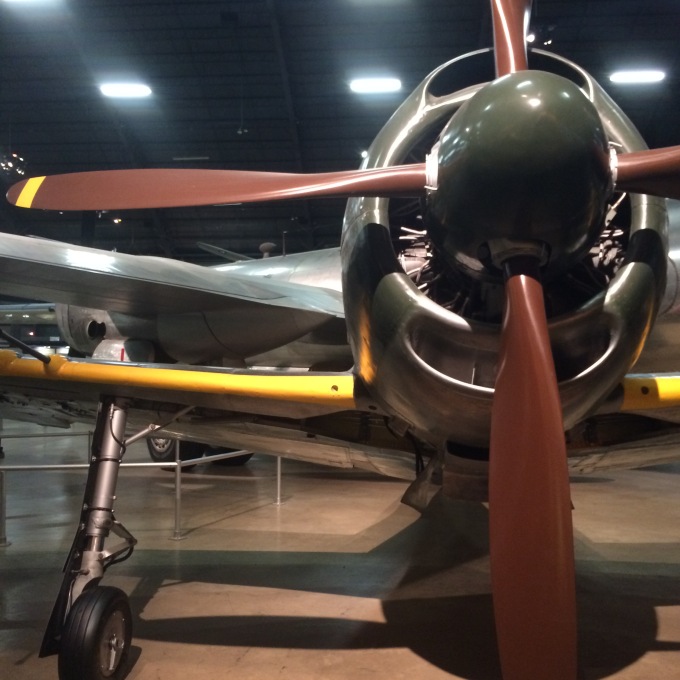
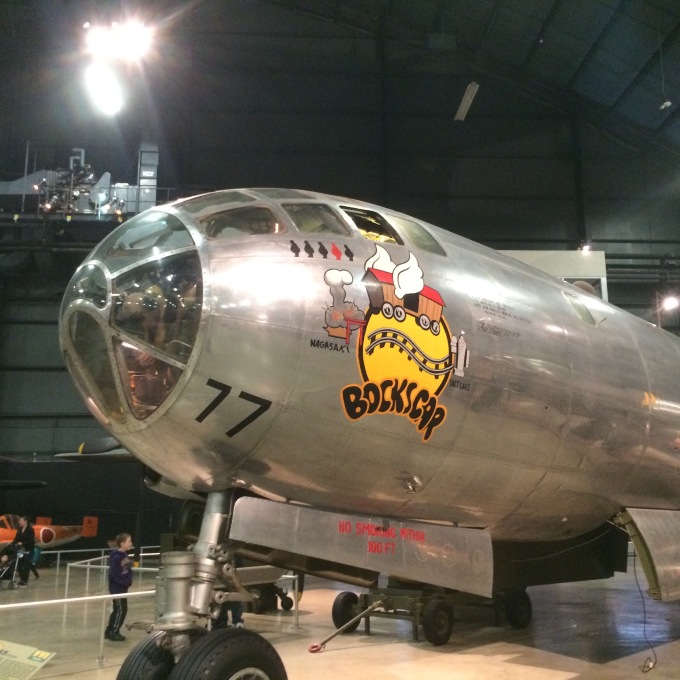
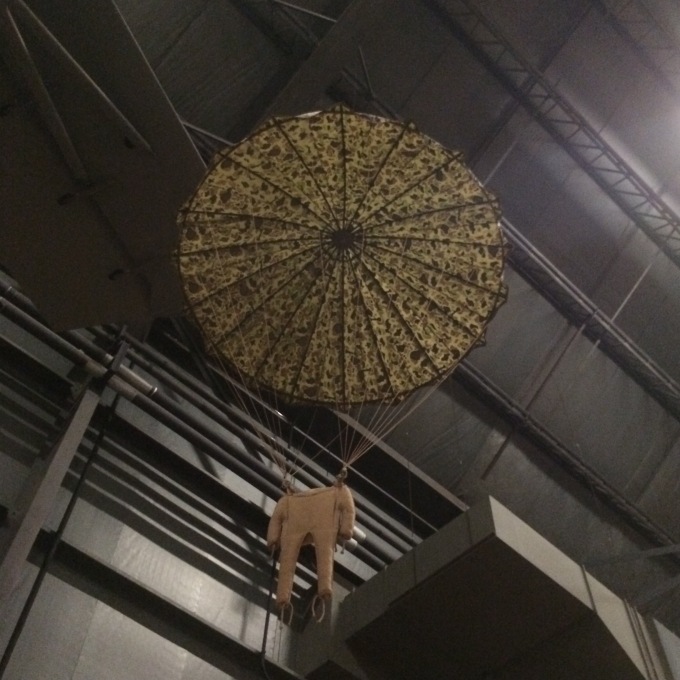
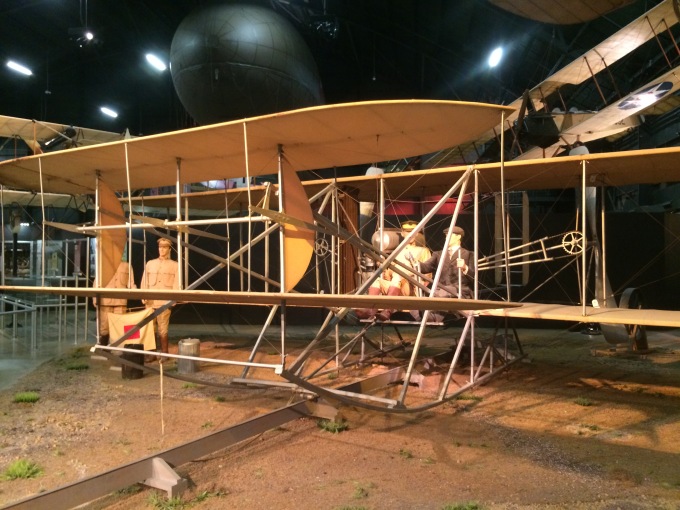
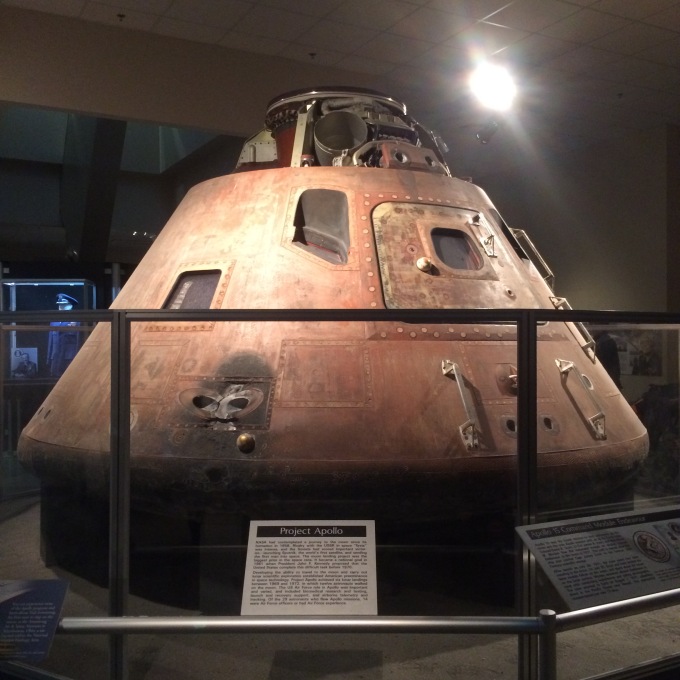
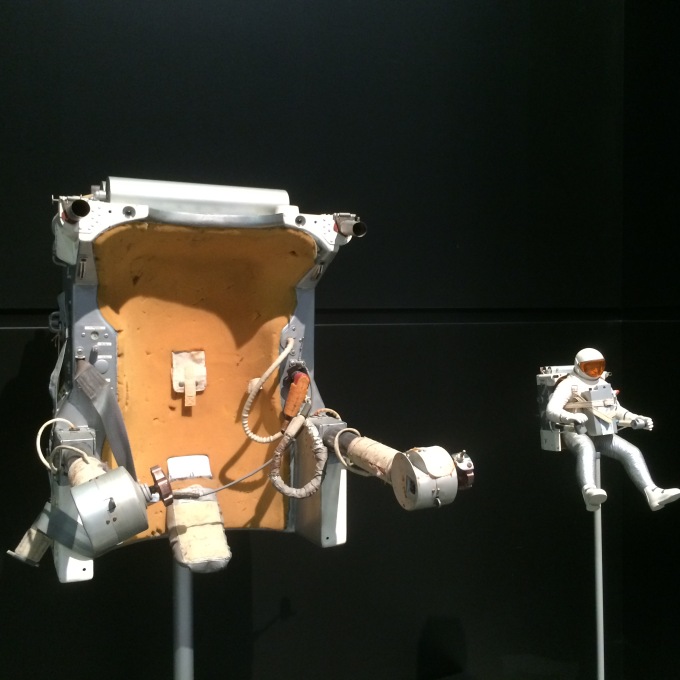
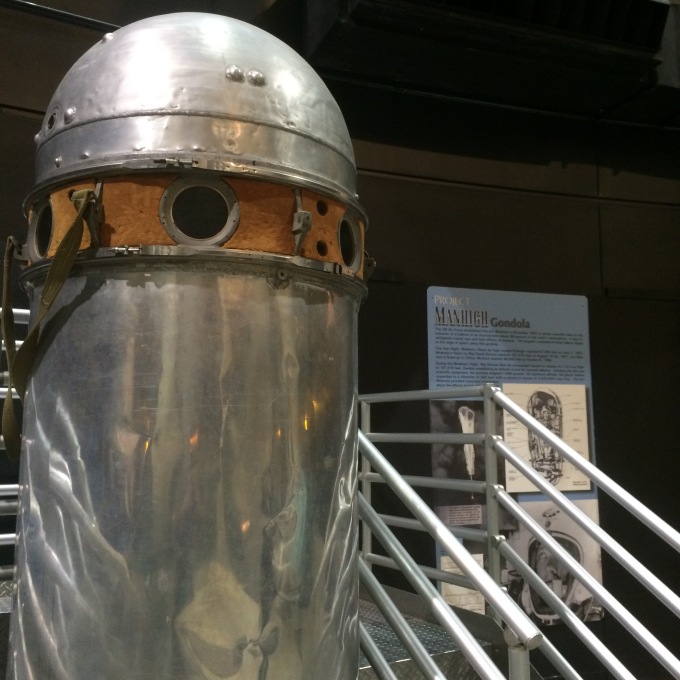
Monday, March 21, 2016
The Cottingley Fairies
I’m not sure why it’s taken me so long to pick this
subject. I’ve been interested in the Cottingley
Fairy story since FairyTale: A True Story
came out in 1997 (I would’ve guessed it was earlier than that, actually). It just ticks all the right boxes for me: the
right era, fairies, photos, a hoax. It’s
just great. Like I said, I should’ve
done this post earlier.
In 1917,
Frances Griffiths and her mother went to live with her aunt, uncle, and
cousins, the Wrights, in Cottingley, near Bradford, in England. Frances had grown up in South Africa, but due
to World War One, her father was now in the army and she and her mother had to
go live with family. Frances was about
ten, and her cousin, Elsie, was about sixteen.
They played together down by the Cottingley beck (stream) and would
often come back filthy, much to their parents chagrin. They claimed they were down at the beck
playing with fairies. One Saturday, they
decided to borrow Arthur Wright’s Midg camera and “take a photo of the fairies
they had been playing with all morning” (1).
They came
back from the beck a picture of Frances and some fairies. Arthur knew that Elsie was an artist and
liked drawing fairies and so thought the photo was faked somehow. About a month later the girls borrowed the
camera again and came back with a picture of Elsie and a gnome. Again, Arthur thought it was faked, and didn’t
let the girls borrow his camera anymore.
Polly Wright, though, believed her daughter’s and niece’s photos were
real.
In mid-1919, Polly took the photos
to a theosophy meeting. Theosophy
believes in finding divinity in the mysteries of nature. Theosophy also believes that humanity is
evolving towards perfection. The photos fit
in with these beliefs because they showed people being able to interact with “higher
beings”, that were one of those mysteries of nature.
Polly
showed the photos to the speaker at the theosophy meeting, asking if they might
be real; the speaker took them and showed them at the society’s conference a
few months later. At this conference
Edward Gardner became interested in the photos.
Gardner sent the photos to the photographic expert Harold Snelling. Snelling believed the negatives were
authentic in that they photographed what was in front of them; he wouldn’t
comment if the fairies were real though.
Gardner had Snelling clean up the negatives so they could be better
printed and better analyzed. Gardner
sold the prints at his lectures. The
photos quickly spread through the spiritualist community.
The photos
were gaining an audience. In 1920, Sir
Arthur Conan Doyle heard of the photos from the editor of Light, a spiritualist publication.
Doyle had long been interested in mysticism and spiritualism; after the
deaths of his wife, son, brother, brothers-in-law, and nephews all in a fairly
short span, this interest deepened.
Doyle contacted Gardner about the photos to find out more about
them. Doyle then contacted Arthur and
Elsie Wright, asking their permission to use the photos for an article he was
writing. Arthur agreed, but didn’t want
to be paid for their use believing “if genuine, the images should not be ‘soiled’
by money” (3).
Gardner was
still trying to prove the authenticity of the photos. He went to Kodak for a second opinion. Kodak said the photos “showed no signs of
being faked” but that “this could not be taken as conclusive evidence … that
they were authentic photographs of fairies” and wouldn’t give a certificate of
authenticity to them (4). The
photographic company Ilford also believed there was evidence of faking. Doyle, too, was seeing if other people
thought they were real. He showed the
photos to the psychical researcher Sir Oliver Lodge. Lodge believed they were fake, sighting their
“distinctly ‘Parisienne’ hairstyles” (5).
In July
1920, Gardner went to Cottingley. He
brought two Kodak cameras and “secretly marked photographic plates” and wanted
Elsie and Frances to take more photos (6).
By this time Frances was living in Scarborough with her parents, but she
was invited back for the summer. The
weather was bad that summer and it wasn’t until August 19 that they were able
to take more photos. Polly Wright was
with the girls, but they told her the fairies wouldn’t come out if others were
around, so Mrs. Wright left. The girls
were then able to take three new photos.
The new
photos were carefully packaged and sent to Gardner in London. Gardner was thrilled with the pictures and
sent a telegram to this effect to Doyle who was lecturing in Australia. Doyle replied, “When our fairies are admitted
other psychic phenomena will find a more ready acceptance” (7).
The article
Doyle had been working on, and used the photos for, came out in The Strand around Christmas 1920. The issue sold out in two days. In the article, the Wrights were called the Carpenters,
Elsie was called Iris, and Frances was called Alice. Press coverage of Doyle’s article was mixed,
but with a lot of “embarrassment and puzzlement” (8).
In 1921,
Doyle wrote another article for The
Strand about other accounts of fairy sightings. These articles formed the basis for his 1922
book, The Coming of the Fairies. The second article and the book, too, had mixed
receptions.
In 1921,
Gardner made his last trip to Cottingley.
Again he brought cameras and photographic plates, but he also brought the
clairvoyant, Geoffrey Hodson. This time
the girls didn’t see any fairies and no photos were taken, but Hodson took a
lot of notes about all the fairies he saw around. By this point Elsie and Frances were tired of
the fairies and just played along with Hodson “out of mischief” (9). The girls grew up, married, and moved abroad,
the Cottingley fairies left behind them.
While
mostly fading from view, the photos still popped up after this. In 1945 Gardner’s book, Fairies: The Cottingley Photographs and Their Sequel, was
published. Still, criticisms
persisted. People said they looked like
paper cutouts and that people just needed something to believe in after the
war.
In 1966, the Daily Express found Elsie back in England and interviewed her. She said maybe the fairies were just her
imagination and maybe she’d found a way to photograph her thoughts. This interview renewed interest in the
photos. In 1971, Elsie was interviewed
on the television program Nationwide,
and said the same thing as 1966. In 1976,
Elsie and Frances were interviewed together.
They said “a rational person doesn’t see fairies” but still said the
photographs were real (10).
In 1978 James Randi investigated
the photos. He found the fairies looked
very similar to images in Princess Mary’s
Gift Book, which came out in 1915.
In 1982-83, Geoffrey Crawley, the editor of the British Journal of Photography, came out saying the photos were
fakes.
In 1983 in The Unexplained magazine, Elsie admitted the fairies were faked to
Joe Cooper. She admitted that they were
drawings and that hatpins were used to hold them in place. She still claimed that they had seen fairies
and only the ones in the photos weren’t real.
Frances admitted to the fakes as well. However Elsie said all five photos were faked,
while Frances claimed the fifth one was real.
In 1985, on Arthur C. Clarke’s
World of Strange Powers, Elsie expanded, saying that once Doyle was brought
in, believing in the photos, she and Frances were too embarrassed to tell the
truth. Frances said, “it was just Elsie
and I having a bit of fun – and I can’t understand why they were taken in –
they wanted to be taken in” (11).
Frances died in 1986 and Elsie died
in 1988, both not long after they came clean.
Interest in the photos continued though.
In 1998 prints, a first edition of The
Coming of the Fairies, and some other items were auctioned off for
£21,620. Also in 1998, Geoffrey Crawley
sold off all the Cottingley things he had acquired; this included prints, two
of the cameras, fairy watercolors Elsie did, and a letter in which Elsie
admitted the hoax. Crawley sold the
items to the, now called, National Media Museum in Bradford (near Cottingley).
In 2001, some of the glass plates
were auctioned for £6,000 to an unnamed buyer.
In 2009, Frances’s daughter went on Britain’s Antiques Roadshow with some of the photos and one of the cameras
from Sir Arthur Conan Doyle. She, like
her mother, believed the fifth photo was real.
Her items were appraised at £25,000-£30,000. Later in 2009 Frances’s memoirs were
published.
In 1994, Terry Jones and Brian
Froud parodied Cottingley in Lady
Cottington’s Pressed Fairy Book. In
1997 two movies related to Cottingley came out: FairyTale: A True Story and Photographing
Fairies.
The lure of
the fairies continues… I think part of
it is the wonder and mystery, but also how someone like Sir Arthur Conan Doyle
believed in them. I think it also tells
you something about the time period that the photos became so popular and had
both believers and skeptics.
2, 3, 4, 5, 6, 7, 8, 9, 10, 11 - Cottingley Fairies
Monday, March 14, 2016
Where'd the week go?
Well, I completely lost track of the days this week and don't have a new post. I thought I'd share an article I read recently, though. It's peripherally related to the Victorian fabric dye article, and so I thought it might be of interest. Enjoy!
Also, Happy Pi day!
Monday, March 7, 2016
Violet Oakley
Back in
2010 my family took a trip to Philadelphia.
On the way we stopped in Harrisburg and went to the Capitol building (we’d
go to any capitol building we could when on vacation). One of the first things you notice about the capitol
is the gorgeous green dome. When you
enter the building it’s just as gorgeous.
A big part of what makes Pennsylvania’s capitol special is the murals
throughout. The murals were done by
Violet Oakley, the first American woman to receive a public mural commission.
Violet
Oakley was born on June 10, 1874 in Bergen Heights, New Jersey (her birthplace
is often listed as Jersey City; Bergen Heights was part of Jersey City, so
neither is wrong). Both of Violet’s
grandfathers were members of the National Academy of Design, so when Violet
wanted to be an artist, she had a relatively easy path. In 1892 she started at the Art Students
League of New York, and the following year went to study in England and France. In France she studied at the Académie
Montparnasse.
In 1896
Violet returned to the US to study. She
began at the Pennsylvania Academy of the Fine Arts, but less than a year later
she left and transferred to the Drexel Institute School of Illustration after
the urging of her sister, Hester, who was already attending Drexel. At Drexel, Violet studied under Howard
Pyle. At this time she also made friends
with Elizabeth Shippen Green and Jessie Willcox Smith, other students of Pyle’s;
Pyle nicknamed them the Red Rose Girls because they lived together at the Red
Rose Inn (1).
Violet had
success as an illustrator. She had
pieces in The Century Magazine, Collier’s
Weekly, St. Nicholas Magazine, and Women’s
Home Companion. At the time, about
88% of subscribers to magazines were women, and so there was a push to show the
world from a woman’s perspective, and so women were hired as illustrators. (2).
Despite the success at
illustration, and teaching her illustration, Pyle actually encouraged Violet to
pursue large scale pieces and helped Violet get commissions for murals and
stained glass pieces. Violet still
worked on small pieces when she could.
Violet
attributed her style to Pyle and to the Pre-Raphaelites. Her art also showed a “commitment to
Victorian aesthetics during the advent of Modernism” (3). Violet had also become a Quaker in her adult
life (she was raised Episcopalian), and wanted to showcase the Quaker ideals of
pacifism, equality of races and sexes, and economic and social justice (4).
In 1902,
architect Joseph M. Huston chose Violet to create murals for the Governor’s
Reception Room in the state capitol in Harrisburg, Pennsylvania, purely on the
basis of her talent (5). Before this
point, her only mural had been at the All Angels Episcopal Church in New York
City. Violet admired William Penn’s
utopian vision for Pennsylvania, and wanted to highlight this. She travelled to Europe to study about Penn’s
life. The murals in the Reception Room
took Violet over four years, and highlight her talents as well as her interest
in history. Violet would do fourteen
murals total for the Reception Room, and 43 murals in total in the Capitol
building.
In 1903,
while she was working on these murals, Violet joined Christian Science. While she had been in Florence, Violet had
her asthma cured through prayer and so joined Christian Science. She was a member of the Second Church of
Christ, Scientist in Philadelphia from its founding in 1912 until her death in
1961. In 1939, Violet even illustrated a
poem by Mary Baker Eddy (the founder of Christian Science) in the style of
illuminated manuscripts.
In 1911,
Violet was working with Edwin Austin Abbey on the Senate Chamber and Supreme
Court Rooms at the Capitol, when Abbey died.
Due to her talent and work with Abbey, Violet was chosen to finish Abbey’s
work. This work took Violet nineteen
years, over which time she completed the murals, six illuminated manuscripts,
and a book about the murals.
After her
work at the Pennsylvania Capitol, Violet did a mural at the League of Nations
Headquarters in Geneva, Switzerland; the Henry Memorial Library at the Chestnut
Hill Academy in Philadelphia; and the First Presbyterian Church in Germantown
in Philadelphia (6).
Throughout
the rest of her life lived on and off with the Red Rose Girls and Henrietta
Cozens. Their home in Mt. Airy, PA was
called Cogs from their initials (Cozens, Oakley, Green, and Smith). The home was later called Cogslea, and was
placed on the National Register of Historic Places as the Violet Oakley Studio
in 1977. Her home and studio in Yonkers,
NY, where she lived on and off from 1912 to 1915, are also in the National
Register as Plashbourne Estate.
Violet
lived at Cogslea with her longtime companion Edith Emerson after the other Red
Rose Girls moved out. Edith was the
director and president of the Woodmere Art Museum in Philadelphia. They lived together for the rest of their
lives. Violet Oakley died on February
25, 1961. She is buried in the Oakley
family plot in Green-Wood Cemetery.
While
Violet’s work had fallen out of favor after World War II, there was renewed
interest starting in the 1970s. In 1996,
Violet Oakley was inducted into the Society of Illustrators Hall of Fame - the
last of the Red Rose Girls to be inducted.
In June 2014, Violet’s grave was featured on the first gay themed tour
of Green-Wood Cemetery (7).
1, 2, 3, 4, 7 - Violet Oakley
Subscribe to:
Posts (Atom)














